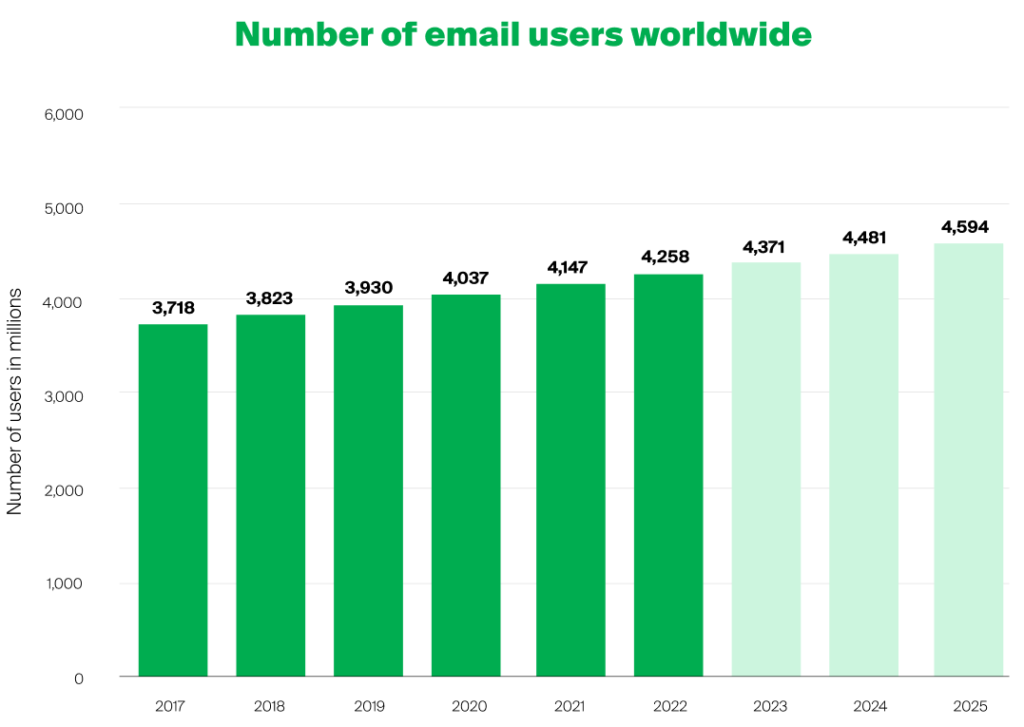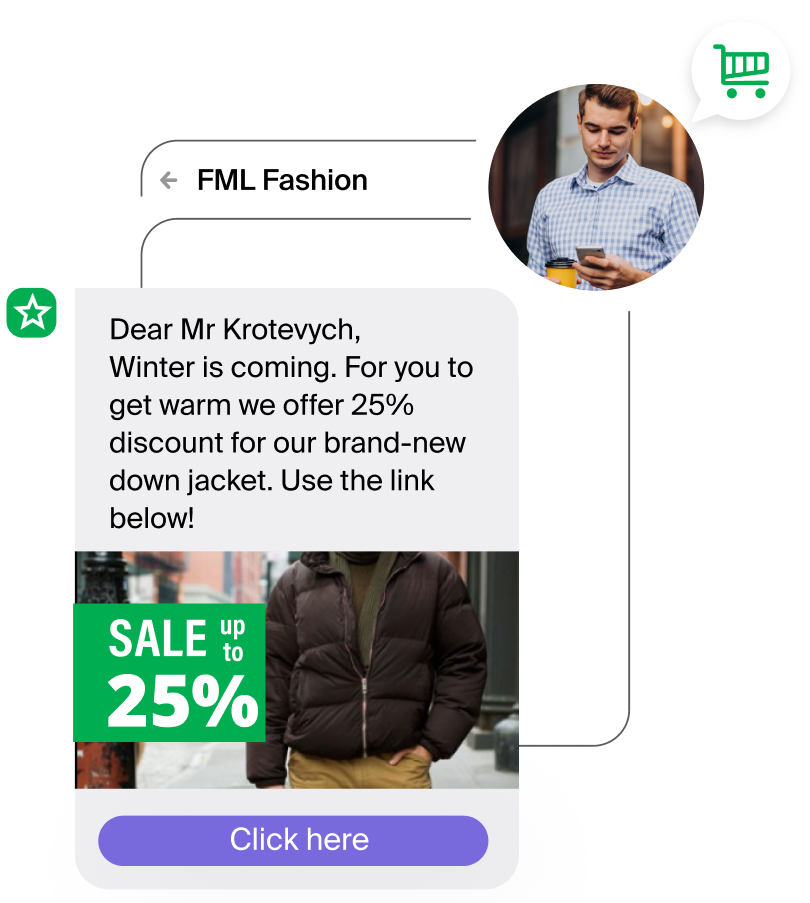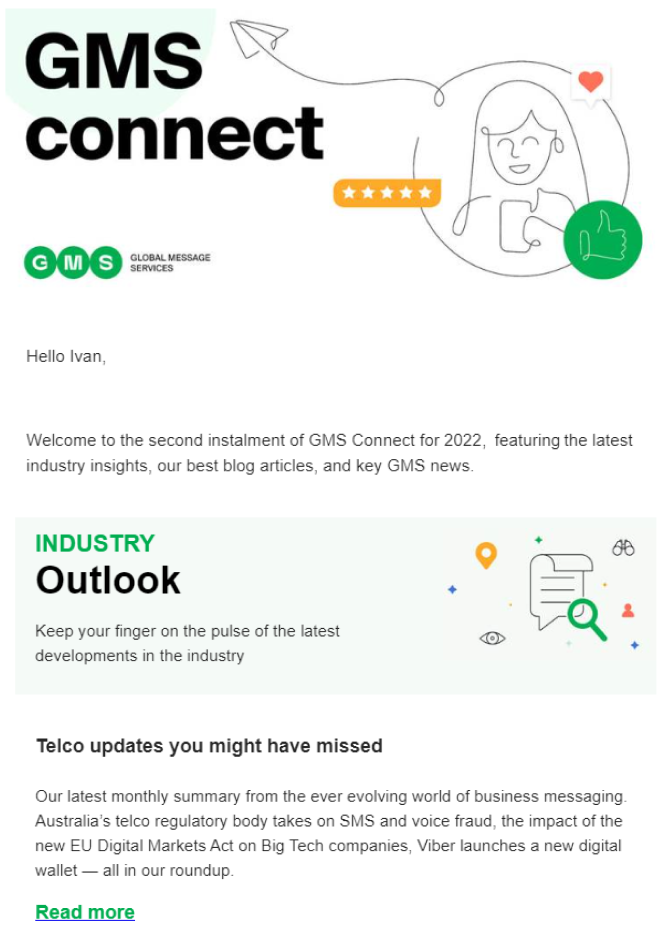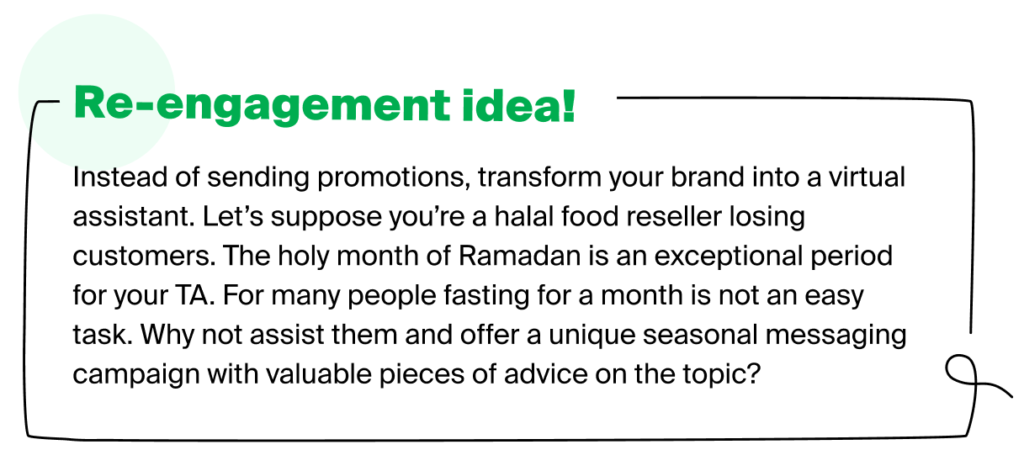A little history
Rome wasn’t built in a day. The same applies to email marketing. Profound things don’t appear out of nothing and this applies to both imperial capitals and game-changing sales instruments. But when did the email marketing story really begin?
- In 1971 computer engineer Ray Tomlinson sent the first email in history — a string of numbers and letters. He also became the person to introduce the usage of the “@” symbol in email addresses
- In 1978 marketing manager Gary Thuerk, working at Digital Equipment Corp, sent out the first commercial email to inform people about a new product. He is also known as the father of internet spam
- Finally, the ’90s — the internet became commercially available to the masses. This is the point where email marketing entered the game to boost enterprises’ sales conversions and revenue
Email marketing today
37% of B2C marketers send marketing emails to their subscribers every day. Email is the third-highest owned-media platform that B2B marketers have used to distribute content in the last 12 months. To understand how big the pool of opportunities can be, just look at the number of email users around the globe.

So why have emails become a popular marketing tool both for B2B and B2C businesses?
- It provides an efficient way to promote products or services through a permission marketing
- It nurtures leads through delighting your customers with content that can help them succeed in their goals
- It enables personalisation, which drives engagement and boosts positive brand sentiments
Marketing email types & alternatives
Email marketing has been on the table for a long time — such a long time that it became the first go-to for numerous marketers. If it works, don’t touch it, right? One channel is not enough to fulfil your KPIs at the highest level. Here we consider the most popular marketing email types and alternative channels to reinforce your communication efforts.
Promotional emails
Promo emails can become a helpful tool to build trust with your target audience (TA), if you offer real value, whether a discount, new product release, or valuable info. According to Marketing Sherpa’s survey, 60% of people enjoy receiving weekly promotional emails, 38% want emails delivered even more often, and 15% wouldn’t mind getting promos daily. The problem is that 21.5% is the average email open rate across all industries — 72% of ecommerce marketers say the biggest challenge they face with email is low open rates. That’s incredibly low when compared, for example, to SMS (95-98%). Imagine how you can grow your marketing ROI by combining the customer’s desire to receive promos and text message view rates! Another option — introduce WhatsApp or Viber Business Messages. Here, you may add greater interactivity by completing your message with the CTA button so that the customer can instantly take advantage of your offer.

Informational emails
Forty percent of people who participated in a survey on email marketing said that they would like the emails they receive to be more informative than promotional. So, let’s talk about newsletters. Did you know this format doesn’t just have to be about the news? A newsletter is an opportunity to share insights, thoughts, and tips as well as new milestones, new products, and new service capabilities. You could also feature valuable content like case studies — whatever brings the most value to your target audience. Email expert Ann Handley recommends focusing on the latter aspect. To that end, imagine you’re writing a one-on-one letter to your client about something that touches them. Correct segmentation lists will help personalise content to the TA’ interests. Sent at regular intervals, newsletters help maintain consistent touch points with your subscribers.

But newsletters are not a monopoly of email services only. You can update users, for example, on Telegram through your brand channel. Creating a community on Viber is another way to gather and educate your consumers. Viber communities are searchable and shareable by default, so if you craft worthy content, fans will indeed find you.
Transactional emails
Transactional emails are essential for the following reasons:
- Keeping customers updated about their actions
- Keeping users in the loop about any security breach with alerts
- Building credibility and trust among your audience
To put it plainly, transactional emails confirm an action the recipient took. Did the customer forget to wrap up the purchase? Not a problem at all — send them a kind reminder via email while gently moving them down the funnel. Interestingly, transactional emails have the highest open rates at almost 61% so this can be a good place for cross-promotions and upsells. For example, when you send an order confirmation, you could add on a coupon code below it for an accessory to the product the person just purchased.
Despite all the pros, emails tend not to be the fastest and most innovative way to deliver transactional messages. What about identity verification? For instance, in the banking industry, manual KYC verification can be a slow, error-prone process. AI verification chatbots, rather than emails , can help speed up the process and reduce false positives by 80%, with 90% model accuracy, mitigating risk and freeing up compliance officers to focus on other tasks. That’s more about the customer experience, and not marketing. Nevertheless, one should understand that all the above are integral parts of a bigger strategy to encourage strangers to convert into loyal customers.
Re-engagement emails
Email list decay is a real problem, with many lists losing 25-50% of subscribers in a year. It may sound a bit trite, but don’t let your loyal customers forget you — give them the feeling of being a part of your wider team. Regularly informing subscribers about your new products, services, or industry insights would be an excellent idea. It works incredibly well with seasonal services and products. Also don’t allow your cart abandonment rate fly high as that directly affects KPI — send timely reminders to help customers finish purchases.
But what if, despite all the efforts, subscribers still don’t engage with your brand? Of course, giving up is also an option, but not for those who want to build a business with solid revenues. Considering other channels may help. Reanalyse your social media content, schedule creative SMS campaigns, and reach clients on Viber or WhatsApp to send them a special offer that they would not want to miss out on (but don’t be overly persistent).

Feedback emails
91% of consumers are more likely to purchase from brands that recognise, remember, and provide relevant offers and recommendations. That’s why collecting feedback is vital for any business wanting to grow.
Email marketing has several options in its arsenal to this end:
- Asking subscribers to reply to an email and share their thoughts — an easy way
- Sending a form with multiple-choice answers or open-ended questions
- Including an NPS-like survey with a scale from 1 to 10
- Asking a client to assess specific modules of your customer portal
But as mentioned before, the average email open rate is not as good as we wish — only 21.5%. Customers will not be able to give feedback if they don’t read an e-message, will not they? That is why we recommend trying other channels for this purpose:
- Contact folks directly via messengers like Viber or WhatsApp — more than 90% of Viber business messages are opened within 3-5 minutes
- A chatbot is the most convenient way to conduct surveys — the entire process is automated and requires minimal employee engagement
Summing up, email marketing is still a must, but will not help win customers on its own. The truth about using emails as your preferred channel is that you risk hitting the iron ceiling really fast. That’s why it’s crucial to distribute your communications among various channels. Multichannel communication is the key to success here. Orchestrating multichannel campaigns has never been easier than with a balanced CPaaS solution. If you’d like to kickstart your multichannel marketing, get in touch with one of our experts today.

